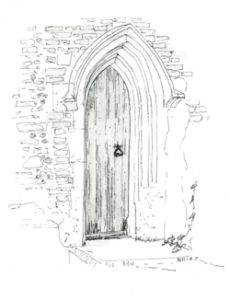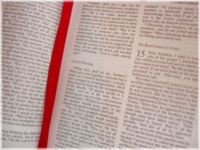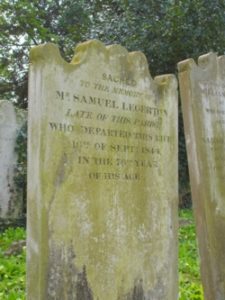Funerals
 An introduction
An introduction
Organising the funeral of a loved one can be a distressing task, but one which can be made easier with forward preparation. Though we might like to avoid discussing death, we cannot hide forever from our own mortality, and making choices for our own funerals can greatly help those who survive us. The church encourages people to do this. Furthermore, we suggest people consider not only the plans for their funeral, but also that they ensure they have made a will which reflects their wishes. Our reasoning for this can be viewed in our policy on wills and legacies which is here.
We hope the following information and advice will help. Please do not hesitate to contact us for a fuller, more personal service.
Before the Service
The Funeral Director
Your first call should be to the funeral director of your choice who will guide you through the preliminary stages of organising your loved one’s funeral and arranging legal necessities such as the registration of the death. Most people in this area use: Powells Ware (01920 463260), Daniel Robinson & Sons Bishop’s Stortford (01279 655477) or Harlow (01279 426990) or Austin’s Ware (01920 468551).
The Rector
Once you have made contact with the funeral director and established a planned date, they will confirm with the Rector whether the church is available for you at that time. Then the Rector will contact you to discuss the finer parts of the service itself. Most families prefer to host the Rector for this discussion, but if you would rather come to the Rectory, that can be arranged without difficulty. This discussion provides a good opportunity for family members to reflect individually and together about the life of the deceased person. Because decisions taken at this meeting will influence some of the content of the funeral service, it is good if all the close family can be present.
The Funeral Service itself
Church
The local parish church is the ideal venue for the funeral service of a parish resident. It will be familiar to many of the friends of the deceased, and makes it easier for many local contacts to attend the service and pay their respects.
Crematorium
Many people choose to have their loved one’s funeral service conducted in the crematorium chapel. These chapels are often devoid of the symbols of any particular religion so that they can cater for the funeral services of different religions without difficulty. Because the chapels are in great demand, time is limited at these services; most provide as little as 30 minutes including time for guests to arrive and depart. Whilst it is not necessarily desirable to have a long funeral service (and most church services would be no more than 30 minutes), the time constraints in crematoria chapels do force a short service and can make people feel unduly rushed. Many people believe the crematorium is a significantly cheaper option, but the difference in price between a full funeral service at a crematorium and a church funeral followed by burial in the churchyard is negligible.
Music
The service in church usually includes two hymns played by our organist; occasionally, with negotiation, it is possible to sing a third, but there is rarely time. The organist will also play quiet music whilst the coffin is brought into the church building and again at the end. We have only limited facility for playing contemporary music from CD or audio-cassette. We also ask families to respect the Rector’s right of censorship in this matter, acknowledging that not all popular music is appropriate for a Christian funeral service.
Eulogy and Poetry
In our experience, whilst family members would dearly like to say a few words about their loved one, many find the occasion too traumatic. The Rector will gladly speak about the life and character of the deceased person to remove this burden from grieving relatives. Because of time-constraints, any eulogy should be no longer than 3 minutes.
Quite often, families like to read poetry at some point during the service. We are very happy for this to happen, but, sadly, as for popular music, there are poems which are unsuitable for reading during a Christian funeral service. Once again, we therefore ask families to respect our right of censorship and request that copies of poetry of other texts are submitted in advance to the Rector. This also gives him the opportunity to tie some of the sentiments from the text into the eulogy or sermon as appropriate.

Bible Reading
In a Christian funeral, there is always a reading from the Bible which forms the basis for a short talk by the Rector about the Christian hope – that Christ’s resurrection from the dead gives us reason to believe that death is not the end, but that all who trust him will be raised with him to eternal life. If families have a particular Bible passage in mind, the Rector will be glad to use it. Alternatively, he will choose an appropriate passage after speaking to the family.
Afterwards
The funeral service ends with a prayer of Commendation in which we publicly commend the deceased person to the mercy of God. Afterwards, there are two options: either the coffin is taken for burial in the churchyard or cemetery, or it is taken to the Crematorium.
Burial in the churchyard or cemetery
The graveside ceremony is very short, consisting of the reading of some words of the Bible and the committal. Words of comfort from the Psalms are usually incorporated. It is quite common for the chief mourners to throw the first handfuls of earth back into the grave, but not everybody feels comfortable doing this. There is no “right” or “wrong” in this, and family members should not feel pressurised in any way.
Cremation
The ceremony at the crematorium after a full service in church is short like the graveside ceremony (see above) and contains similar prayers and readings. At the end of the service the curtains are drawn around the coffin and the family are obliged to leave it behind as they are ushered from the chapel. Many people find this moment very difficult, for it provides a very vivid illustration of the separation they feel from their loved one who has died. Nonetheless, despite the pain of this moment, this enforced separation is a helpful part of the healing process of grief.
Crematoria can offer the facility to play recorded music on cassette-tape or CD and quite often, families choose a favourite song to play on arrival, or as the minister leaves the chapel (or both). If you would like this service, and the Rector of the parish is to conduct the service, please supply him with a copy of the recording in advance to enable him to refer to it as appropriate.

Interment of ashes
At all of the churches in the benefice, and at local crematoria, there are Gardens of Remembrance where ashes may be interred (buried). A short service is conducted which contains a portion of scripture and a brief message to remind us of the hope we have in Jesus Christ and his victory over death.
Headstones, plaques and other memorials
It is quite usual (though not always the case) that a family will want to erect a monument (e.g. headstone) at the site of the grave. The St Albans Diocesan Churchyard Regulations (2020) stipulate that applications for monuments should not be made until at least six months have passed after the interment. This may seem a long time, but it is actually in the best interests of all to wait. The earth takes a long time to settle after a grave has been dug – if a monument is erected too quickly and there should be any subsequent slip in the earth causing the stone to lean or collapse, this would be both distressing and financially burdensome for the family who maintain responsibility for the stone.
When considering what type of monument is desirable, families must consider the Churchyard Regulations which govern these matters. A copy of a guide to these regulations is available on application to the Rector and here.
In order to introduce a monument to a churchyard, a formal application must be made to the Rector (in duplicate and on the approved St Albans Diocesan forms). Local stone-masons will help with these applications. Provided the design and construction of the monument are in keeping with the regulations, the application should be accepted without difficulty. Inscriptions should be brief and personal, and must not undermine the Christian message of the hope of resurrection. Some popular suggestions sadly sail too close to the wind on this issue. The Rector would be very happy to discuss this with you in advance of your formal application.
The Diocesan Regulations encourage fresh flowers or the planting of bulbs on graves, but consider artificial flowers and perennials or shrubs inappropriate. Flowers remind us of the flourishing and the fragility of human life, and bulbs are a pointer to resurrection. Artificial flowers often end up looking shabby and causing litter, and shrubs hamper the regular maintenance of the churchyard. The Parochial Church Council (PCC) is authorised to tidy any graves which are looking unkempt and to remove unauthorised decorations.
Ongoing Contact
Losing a loved one is never easy. Grief takes many forms and lasts years. The Rector is available if you would like to talk. Details of how you can contact him are here.
Financial Matters
We try to keep costs to a minimum. There are two distinct elements to our pricing: a statutory charge for the service which is agreed nationally each year by the Archbishop’s Council, and a price to recover expenses incurred for holding the service which is negotiated annually by the local Parochial Church Council. In most cases you do not need to pay the church separately; your Funeral Director’s prices will include these expenses, and they will settle our account.
If you would like to see an indicative breakdown of the various prices, click here.